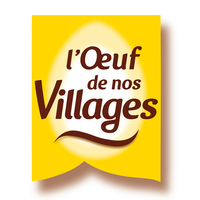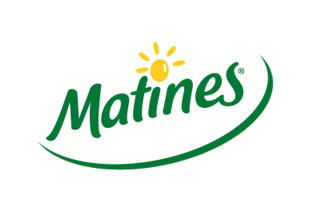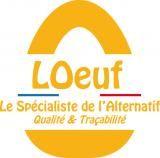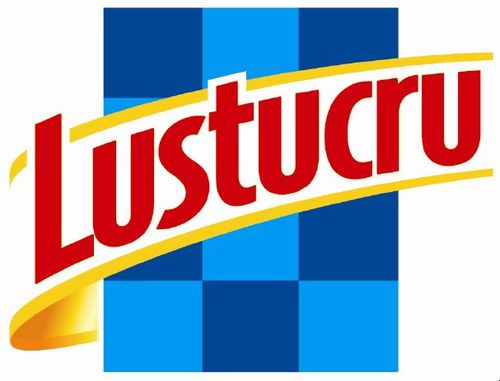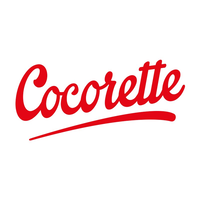Summary
The global egg market has experienced significant trends starting from 2020, including a shift towards alternative egg production and consumption. With France being the leading European producer and its citizens consuming eggs at a rate higher than the European average, there has been a notable trend toward more sustainable and animal welfare-friendly practices. In 2020, France reached its target of 50% alternative hen rearing, signifying a move away from standard caged eggs. The Covid-19 pandemic further accelerated this shift as sales of alternative eggs increased to represent 65% of the total by mid-2020.
Consumption patterns were influenced by the pandemic, with a 15.1% increase in retail sector sales volume over the first seven months of 2020 while out-of-home catering suffered a 75% drop in activity during the first lockdown. Despite the positive retail sales, the French egg industry was challenged by a 2021 trend of overproduction due to reduced outlets in out-of-home catering and significant investments in alternative breeding. The cost of poultry feed also rose sharply due to high demand, leading industry players to call for an increase in egg and egg product prices. In supermarkets, private labels held a dominant 43.3% market share in value, showing a growing preference for non-caged eggs, with major brands like Matines planning to transition to 100% alternative eggs by 2025.
Evolving Preferences and the Rise of Alternative Egg Production in France
The French egg market, a significant part of the country's food consumption landscape, is witnessing a noteworthy transition that reflects the changing tastes and ethical considerations of consumers. With an annual per capita consumption that stays above the European average, specifically around 220 eggs, the French have shown a consistent fondness for eggs in their diet.
The demand for eggs in France is not just quantitatively substantial but also qualitatively discerning. A staggering 95% of the French population is inclined towards supporting the shift to alternative methods of egg farming over conventional caged options. This shift is evident in the marketplace as well— with over half the eggs consumed originating from non-cage-based farms, a significant leap from the scenario a few years prior. Consumers are also placing a growing emphasis on transparency and traceability concerning the origin of eggs, an aspect that producers have meticulously catered to. Furthermore, the economic landscape of the French egg market delineates a pronounced trajectory favoring non-caged eggs. Alternatives such as free-range and organic are increasingly dominant, commanding a higher price point and reflecting a consumer base willing to invest more for perceived quality and ethical standards.
It is pertinent to note that amidst this shift of preferences, the production costs of these alternative eggs are notably higher, sometimes over twice as much compared to standard eggs. The earnestness towards alternative and more humane egg farming forms a part of a broader trend where French consumers are embracing products that pledge adherence to eco-friendly practices, nutritional benefits, and the welfare of animals. With brands innovating around these parameters, the retail egg market is in a state of dynamic competition, with various players striving to offer distinct value propositions.
As France stands at the cusp of a potential phasing out of caged egg production method, a confluence of consumer advocacy and regulatory pressures seem to propel the industry toward comprehensive adoption of alternative farming systems. This trend is sustained by the burgeoning demand for transparency, ethical sourcing, and environmental considerations, capturing the essence of modern French market demands.
Pivotal Players Steering the French Egg Market Landscape
As we navigate through the dynamic contours of the French egg industry, several key players emerge, heralding pivotal roles in shaping market trends and satisfying consumer appetites.
- Matines is a noteworthy contender with a firm foothold and a solid network of 300 partner breeders. Despite experiencing recent setbacks linked to an erstwhile focus on caged hens, Matines is recalibrating its compass to align with emerging market demands. By embracing a commitment to transition entirely to producing alternative eggs by 2025, Matines is tailoring its offerings to meet the ethical and quality expectations of today's consumers.
- Parallel to this, the independent brand L'Oeuf de Nos Villages commands a strong market presence, recording a favorable upward trajectory in sales. Embracing the virtues of tradition and terroir, the brand resonates with consumers seeking traceability and local production values, carving a significant niche in the market.
- LDC Group maintains its market significance through two of its brands: Loué and Le Gaulois. Both brands have carved distinct identities — Loué, aligning itself with the free-range farming ethos, and Le Gaulois, banking on a pronounced growth spurt, albeit from a smaller baseline. These brands capture a harmonious blend of quality and ethical farming, resonating with consumer preferences for humane and sustainable practices.
- Cocorette is another name that resonates within the market landscape, operating under the Cocorette Group (formerly Oeufs Nord Europe). Conviction in its farming practices and ecologically conscious packaging choices sets Cocorette apart in an increasingly competitive space.
- Concluding this panoramic tour of the French egg industry's champions is the Panzani Group, through its Lustucru line, crafting a market presence that complements the diverse needs of French consumers, from kitchen tables to gourmet establishments.
Collectively, these market players, each with its unique brand ethos and strategic direction, weave a rich tapestry that represents the multifaceted French egg industry. As they navigate changing consumer demands and regulatory landscapes, they continue to lay the groundwork for a market that’s adaptable, ethical, and poised for future growth.
to understand this market
Detailed content
 Inforamtion
Inforamtion
- Number of pages : 30 pages
- Format : Digital and PDF versions
- Last update : 20/03/2021
 Summary and extracts
Summary and extracts
1 Market overview
1.1 Definition and scope of the study
The study will focus only on eggs of poultry intended for food consumption and their derivatives, i.e. the egg products which are processed eggs.
In a a global market that has been growing for several decades, China dominates global production with 30% of production in 2018, compared to about 10% for the EU.
The market for eggs and egg products is very important in France with a average French consumption higher than the average European consumption. France is the leading European producer of eggs for consumption, with a production which has been growing for several years. But other countries - such as Spain - have also experienced strong growth in recent years.
The French market is increasingly faced with changing demand expectations, both in terms of the origin of production (product traceability) and of the type of farming from which the eggs come (growing desire for alternative breeding solutions to the fitted cage). The French industry has thus organized itself in order to achieve 50% of alternative layer hen rearing (on the ground, organic or in the open air) - a target it has already reached in 2020.
1.2 Analysis of global and European markets
According to the FAO, the world egg consumption per capita has almost doubled since ****. Asia has contributed a lot to the growth of the market : over the last ** years, Asian production has increased fourfold, while world production has increased by a factor of *.*.
In ****, world production was estimated at ** million tonnes. ...
1.3 A growing French market
In France, ** billion eggs were produced in ****, for a turnover of producers of about *.* billion € according to ITAVI.
The number of eggs produced in France has been growing since **** as highlighted in the following graph :
Evolution of egg production (***) France, **** - ****, in billions Source: ****
1.4 Foreign trade analysis
Foreign trade in shell eggs
By taking the codes ********, ******** and ******** on Finance.gov, the following graphs show the number of eggs in shell, fresh, preserved or cooked, from domestic or backyard poultry.
Foreign trade is in deficit in terms of poultry eggs in shell for France with a coverage rate of ...
1.5 The impact of the Covid-19 crisis
Overall, the impact on the egg industry is mixed with :
In the retail sector, the impact is very positive : over the first * months of ****, sales volume increased by **.* compared to *% per year in recent years : proof of a strong increase in home consumption.
In out-of-home catering, the impact is very negative ...
2 Analysis of the demand
2.1 Eggs, a product appreciated by the French
Egg consumption in France :
According to a survey CSA, in ****, **% of French people eat eggs. This was *% more than in ****. This is the case for all age groups, as **% of children enjoy eggs. Thus, on average, *** eggs are consumed per year and per person in France in **** : the French therefore consume ...
2.2 Distribution of egg consumption
Home consumption of shell eggs, bought in shops, represents **% of egg consumption in France.
To simplify, the market is divided **/** between the sale of shell eggs to supermarkets and the sale of eggs to the food industry and the catering industry, in the form of egg products or shell eggs.
Egg ...
2.3 Purchase criteria and egg categories preferred by the French in stores
The main criteria for buying eggs are :
The way the hens are raised : **% of French people support the industry's transition to alternative livestock farming French origin : **% of consumers are committed to it in **** A third criterion, somewhat less important, is the laying date according to CNPO
Importance of the French origin ...
2.4 Evolution of the food industries and the food service industries consuming egg products
As seen in *.*, the food industry and the catering industry account for a little less than half of egg consumption in France, including :
**% in the form of egg products for the food service and food industry **% in the form of shell eggs for the catering industry
The food industries use ...
3 Market structure
3.1 Value chain of the egg industry in France
Simplified diagram of the value chain of the egg industry
France, ****
Source: ****
NB:
TEOC = Tonnes of Eggshell Equivalents Pullets = Future layers
3.2 Analysis of egg production (table eggs)
Egg producers can be :
Under contract with packaging centres (***) Self-employed the producers have their own packaging centre
The contracted share is the most important.
The packing centres ensure the integrity and conformity of the eggs to market standards, by sorting, grading and packing them.
There are also groups marketing eggs for ...
3.3 Analysis of egg distribution channels
**% of the French production is sold for home consumption of French households in shell eggs.
**% of the eggs are also processed into egg products, the rest is sold in shell form.
Marketing of eggs by distribution channel on the French market France, ****, in Source Franceagrimer NB: RHD = catering outside the ...
3.4 Analysis of processing into egg products
As seen in *.*, **% of eggs are processed into egg products.
According to Franceagrimer, in ****, ***,*** tons of egg products were manufactured in France: the eggs used are of various kinds :
table eggs with defects of size, visual surplus production of "table" eggs specific farms where eggs are intended for processing
Processing is ...
3.5 Segmentation and dynamics of players in the retail sector
In supermarkets, a market that is growing faster in value than in volume:
In ****, sales of eggs in supermarkets have increased by *.*% in volume and *.*% in value compared to **** This was driven by the growth in sales of eggs from farms other than cages.
Source: ****
Analysis of market share in the ...
4 Analysis of the offer
4.1 Typology of egg supply
Method of rearing laying hens and type of eggs : [***]
There are * types of breeding that result in * types of eggs
*) Organic farming (***) : Hens fed with organic food, with access to outdoor runs with vegetation. Indoors, the hens have nests, perches and food.
*) Free-range farming - including Label Rouge (***) : the ...
4.2 Evolution of the main costs and prices of eggs and egg products
Evolution of the main costs for the sector
Most of the time, cage farmers who want to switch to alternative systems have to invest in new buildings, requiring an average investment of ** to ** euros per hen.
The CNPO was estimating to *** million the amount of investment required, excluding the cost of ...
4.3 Major issues and trends in the egg industry
As the alternative egg becomes more common, brands need to focus on other areas to differentiate themselves.
The importance of traceability and French origin : The Eggs of France logo was launched in ****, and since summer **** even extends to food products containing eggs in recipes.
The "without": Brands are increasingly focusing on ...
5 Regulation
5.1 Regulations
Eggs are subject to regulations that ensure their traceability and set the applicable marketing standards.
There are * categories of eggs, as they are classified in the packing centres :
class A eggs are fresh eggs intended for consumers class B eggs are eggs delivered to industries
The eggs must also be labelled ...
 List of charts
List of charts
- Distribution of table egg production
- Development of table egg production in the main European countries
- Value of world trade in eggs and egg products
- Evolution of egg production (from laying hens)
- Frequency of egg consumption
All our studies are available online in PDF format
Take a look at an example of our research on another market!
Latest news
Companies quoted in this study
This study contains a complete overview of the companies in the market, with the latest figures and news for each company. :
 Choosing this study means :
Choosing this study means :
Access to more than 35 hours of work
Our studies are the result of over 35 hours of research and analysis. Using our studies allows you to devote more time and added value to your projects.
Benefit from 6 years' experience and over 1,500 industry reports already produced
Our expertise enables us to produce comprehensive studies in all sectors, including niche and emerging markets.
Our know-how and methodology enable us to produce reports that offer unique value for money.
Access to several thousand articles and paid-for data
Businesscoot has access to all the paid economic press as well as exclusive databases to carry out its market research (over 30,000 articles and private sources).
To enhance our research, our analysts also use web indicators (semrush, trends, etc.) to identify market trends and company strategies. (Consult our paying sources)
Guaranteed support after your purchase
A team dedicated to after-sales service, to guarantee you a high level of satisfaction. +44 238 097 0676
A digital format designed for our users
Not only do you have access to a PDF, but also to a digital version designed for our customers. This version gives you access to sources, data in Excel format and graphics. The content of the study can therefore be easily retrieved and adapted for your specific needs.
 Our offers :
Our offers :
the egg market | France
- What are the figures on the size and growth of the market?
- What is driving the growth of the market and its evolution?
- What is the positioning of companies in the value chain?
- Data from several dozen databases
Pack 5 études (-15%) France
- 5 études au prix de 75,6€HT par étude à choisir parmi nos 800 titres sur le catalogue France pendant 12 mois
- Conservez -15% sur les études supplémentaires achetées
- Choisissez le remboursement des crédits non consommés au terme des 12 mois (durée du pack)
Consultez les conditions du pack et de remboursement des crédits non consommés.





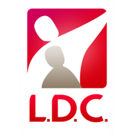 Loué poultry conquers the Polish market - 23/11/2023
Loué poultry conquers the Polish market - 23/11/2023
 In the Doubs region, Coquy eggs go from strength to strength - 14/09/2023
In the Doubs region, Coquy eggs go from strength to strength - 14/09/2023
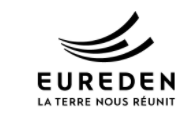 The Eureden group invests in its PEP Ploërmel egg factory - 13/06/2023
The Eureden group invests in its PEP Ploërmel egg factory - 13/06/2023
